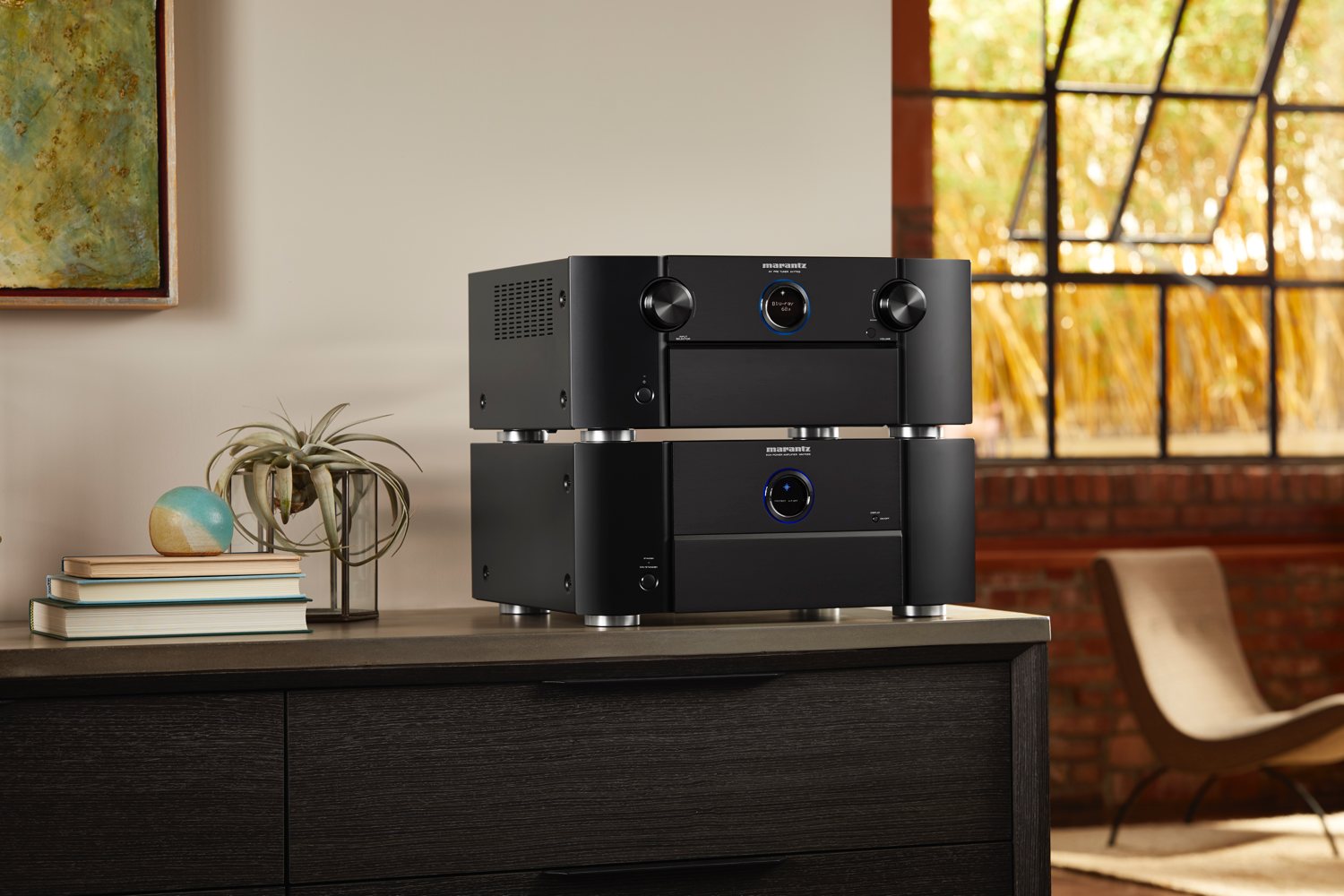If you’ve just got back from watching the latest blockbuster in an IMAX theater, your home theater setup may feel a little lacking. Fear not, as soon there will be an alternative to paying $400,000 for your own personal IMAX theater at home, as IMAX Enhanced, developed by IMAX and DTS, will be coming to home theater products in the near future, and Denon and Marantz are the first companies to announce new products that will integrate the technology.
In the case of Denon, the company has announced that two new A/V receivers will support IMAX Enhanced: The AVR-X4500H and the AVR-X6500H. The AVR-X6500H is an 11.2-channel monster with up to 140 watts of power per channel at 8 ohms, while the AVR-X4500H is nothing to sneeze at, with up to 120 watts of power across its 9.2 channels. Both receivers support object-based audio in the form of Dolby Atmos as well as DTS:X and Auro-3D. The AVR-X4500H is capable of 5.2.4-channel configurations, while the AVR-X6500H can handle up to 7.2.4-channel configurations.
Turning to Marantz, its first IMAX Enhanced-ready product is the AV7705 A/V pre-processor. Meant to work with a separate power amp for a more customizable setup, this 11.2-channel pre-processor features both XLR balanced and RCA unbalanced outputs for each channel. A major benefit for audiophiles is the addition of hi-res audio, with support for 24-bit/192kHz PCM audio as well as DSD 2.8MHz and 5.6MHz. Object-based audio is supported via Dolby Atmos, DTS:X, and Auro-3D, while Dolby Surround, DTS Neural:X, and Auto-Matic up-mixing are featured as well.
Neither brand’s products will support IMAX Enhanced out of the box, with a firmware update bringing support planned for early 2019. A future firmware update will also bring support for Apple’s AirPlay 2 to all of the products mentioned above as well. All of the products feature support for HDMI 2.1 and eARC, but not necessarily every HDMI 2.1 feature, like 8K.
As for what IMAX Enhanced brings to the table, we haven’t yet had the chance to try it, but it promises “a new level of audio and visual excellence.” Everything else we’ve seen under the IMAX name has been fantastic, so there’s no reason to expect otherwise here.
The Denon AVR-X6500H will retail for $2,200, while the AVR-X4500H will sell for $1,600. Marantz’s AV7705 will be priced at $2,200. All of the new models are on display at the CEDIA 2018 expo in San Diego.
Updated on September 6, 2018 by Kris Wouk: Edited to clarify that the new receivers may not support all HDMI 2.1 features.
Editors' Recommendations
- Klipsch’s Onkyo-powered Flexus modular home theater sound system starts at $349
- You’ve got 70 days to trade your old Marantz components for discounted new ones
- CES 2023: Drop’s BMR1 Nearfield Monitors bring audiophile sound to your desktop
- Projectors vs. TVs: Which is best for your home theater?
- Denon adds a wireless subwoofer to Home family of speakers





